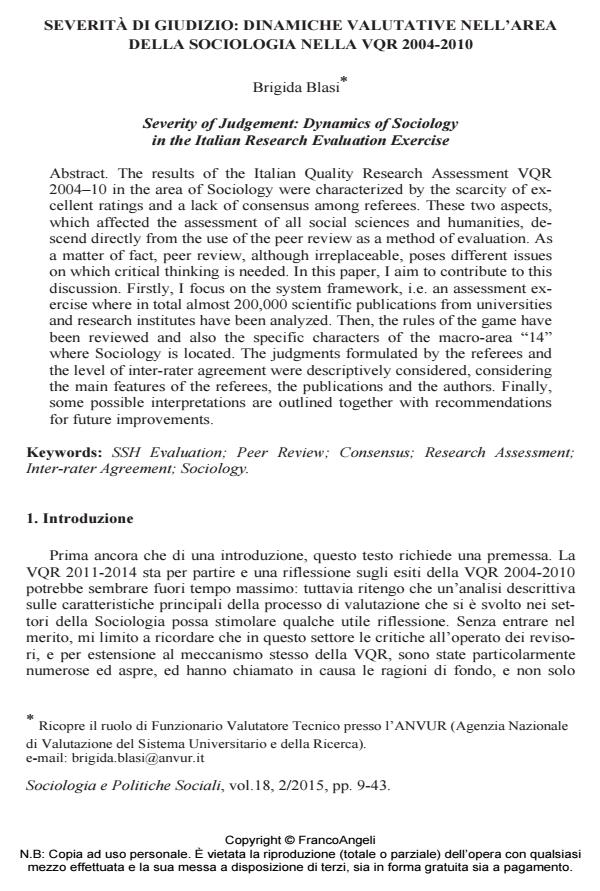Severità di giudizio: dinamiche valutative nell’area della sociologia nella VQR 2004-2010
Titolo Rivista SOCIOLOGIA E POLITICHE SOCIALI
Autori/Curatori Brigida Blasi
Anno di pubblicazione 2015 Fascicolo 2015/2
Lingua Italiano Numero pagine 35 P. 9-43 Dimensione file 390 KB
DOI 10.3280/SP2015-002002
Il DOI è il codice a barre della proprietà intellettuale: per saperne di più
clicca qui
Qui sotto puoi vedere in anteprima la prima pagina di questo articolo.
Se questo articolo ti interessa, lo puoi acquistare (e scaricare in formato pdf) seguendo le facili indicazioni per acquistare il download credit. Acquista Download Credits per scaricare questo Articolo in formato PDF

FrancoAngeli è membro della Publishers International Linking Association, Inc (PILA)associazione indipendente e non profit per facilitare (attraverso i servizi tecnologici implementati da CrossRef.org) l’accesso degli studiosi ai contenuti digitali nelle pubblicazioni professionali e scientifiche
The results of the Italian Quality Research Assessment VQR 2004–10 in the area of Sociology were characterized by the scarcity of excellent ratings and a lack of consensus among referees. These two aspects, which affected the assessment of all social sciences and humanities, descend directly from the use of the peer review as a method of evaluation. As a matter of fact, peer review, although irreplaceable, poses different issues on which critical thinking is needed. In this paper, I aim to contribute to this discussion. Firstly, I focus on the system framework, i.e. an assessment exercise where in total almost 200,000 scientific publications from universities and research institutes have been analyzed. Then, the rules of the game have been reviewed and also the specific characters of the macro-area “14” where Sociology is located. The judgments formulated by the referees and the level of inter-rater agreement were descriptively considered, considering the main features of the referees, the publications and the authors. Finally, some possible interpretations are outlined together with recommendations for future improvements.
Parole chiave:SSH Evaluation; Peer Review; Consensus; Research Assessment; Inter-rater Agreement; Sociology
Brigida Blasi, Severità di giudizio: dinamiche valutative nell’area della sociologia nella VQR 2004-2010 in "SOCIOLOGIA E POLITICHE SOCIALI" 2/2015, pp 9-43, DOI: 10.3280/SP2015-002002